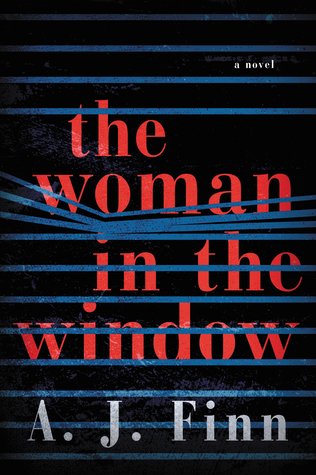The Woman in the Window: A Novel
- By A.J. Finn
- William Morrow
- 448 pp.
- Reviewed by Bob Duffy
- January 5, 2018
Formula fiction, yes, but an incendiary, flawlessly crafted thriller nonetheless.

For starters, we should simply acknowledge reality.
This page-turner from debut author A.J. Finn is consciously tailored to exploit certain narrative formulas of recent pedigree to boost its ascent up the bestseller lists, drawing on the currency left on deposit by the Gone Girl/The Girl on the Train school of popular fiction.
But don’t avoid The Woman in the Window on this score, because this novel is brilliantly crafted and liberally laced with character insights that ring wrenchingly true. It also glides along with quicksilver pacing through plot reversals, explosive revelations, and thrills-a-plenty surprises.
Anna Fox, the novel’s narrator, is a child psychologist living in a posh Manhattan brownstone. As we open, middle-aged Anna is alone and depressed, her husband and daughter far away. A marital separation is imminent, she tells us dejectedly; still, she hears from them just about every day.
But Anna has another problem still. She suffers from agoraphobia. For nearly a year, she’s been unable to leave her house without suffering crippling panic attacks. She’s not entirely cut off from the world beyond, however, as her psychiatrist visits regularly, as well as a physical therapist who has become her friend. And there’s a handyman tenant who rents the apartment in her basement.
Anna has the Internet, too, and this provides email and online access to an agoraphobic support group in which she participates enthusiastically, most frequently by offering professional advice to fellow sufferers. Anna is also a devotee and collector of classic films, notably those of Alfred Hitchcock and the noir tradition of the 1940s and early 1950s.
Like that of fellow shut-in James Stewart in Hitchcock’s “Rear Window,” Anna’s isolation has bred another habit: She can’t resist surveilling the neighborhood through the telephoto lens on her camera.
One day, Anna is caught in the act by a woman in a window of the newly occupied house across the street. The woman smiles and waves back. A moment later, she is knocking at Anna’s front door. A friendship dawns, albeit a short-lived one, as the next day, Anna witnesses the murder of her new friend through the same window where she first saw her.
Problem is, no one seems to believe Anna, including the police and the teenage neighbor Anna has come to know as the woman’s son. This is the Hitchcockian premise that lights the fuse under this compelling, hard-to-put-down thriller. The Woman in the Window catches fire under its pseudonymous author’s deft pacing and spellbinding insight into his heroine’s psychological state — all this despite the novel’s too-familiar, made-for-bestseller components.
These elements include the novel’s title, intentionally derivative of recent shooting-star chart-toppers, plus its woman-in-mortal-peril climax. It’s familiar, as well, for its compelling but flawed heroine, who overmedicates and drinks too much. Even so, as teller of her own tale, Anna is not so much an unreliably deceptive narrator as one who is less than forthcoming, to us and the police, about a very particular aspect of her life.
And this aspect is the platform on which Anna’s deadly peril unwinds.
A.J. Finn is the pseudonym of publishing executive Dan Mallory. It’s easy to see how and why Mallory/Finn has expressly crafted his thriller to drape handily on the superstructure of its sure-bestseller subgenre. What’s more, it’s already been sold into more international publishing markets than any previous debut novel, and it’s been optioned by Fox for production as a “major motion picture,” as the paperback edition will surely trumpet. Mallory/Finn stands to profit well from his efforts.
Although some may grumble about this, well-built formula fiction has been the real deal for centuries (think about this before you object), with many of our most respected authors and playwrights (hint) consciously crafting their output to meet their markets halfway.
While this thriller takes a cynical glance backward at recent bestsellers, it’s still wondrously written. And more to the point, it resonates chillingly with the spring-loaded tension and ominous narrative drive that it shares with its cinematic forebears, specifically Hitchcock and the somewhat lesser-known auteurs of film noir.
Bob Duffy is a Maryland author and working consultant in branding and advertising.

_1_80_124.png)